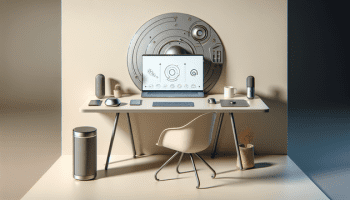One major theme resonated throughout this year’s I/O: The company is renewing its focus on improving Android’s interface—not just for phones tablets, but across all Android-powered devices.
Making Android more immersive
“Material design” is the magic word behind ’s new unified design philosophy, we heard it uttered repeatedly in I/O panels sessions.

A mockup of the design paradigms in Android’s new Material Design.
“Material is the metaphor,” said Nathan Streu, the ay UX (user experience) lead, during a panel on ay’s revamped design. “’re relying on bold, graphical, intentional graphics, that our motion is providing meaning. en we started working with material design we were incredibly excited about the opportunity that was ahead of us.”
That “motion” he’s referring to are things like transitions the way Cards are swiped away. “It’s serving to focus attention maintain continuity throughout the user experience. The feedback is subtle clear transitions are meaningful.”
Getting the type just right

’s new design paradigm includes a new set of typography stards to make the interface more legible.
Streu said that the new Material Design also “relies on the fundamental print line tools…such as baseline grids, instructional templates that can scale across various page types.” He added that “too many types styles can confuse people,” which is why the Android team went for a large, flexible font family to make it more “purposeful [] compelling.” ges within apps like the ay store have a generous amount of padding specialized alignment, so as to “give the page more breathing room.” This is a design paradigm prevalent throughout the new version of Android.
Colors for any eye

The colors are vibrant bold, but don’t veer too far off from the color palette we associated with ’s products.
“[ took] advantage of the new material design color palette, which represents the br colors,” said Taddeo Zacchini, a visual designer at , of the work being done on the ay app. Reds, blues, greens, their counterparts appear throughout the Android interface, so it made sense to implement them within all the native apps, too. “Colors can be really powerful in UI design.”
Soon, the colors in apps like the ay store will change as you shift between screens—somewhat similar to HTC’s Sense 6 interface. Zacchini added that there actually is a functional aspect to this interface dynamic. “You have a sense of place…you know where you are.”
Research, research, research
To come up with all the aspects of the new Material Design stard, researchers from 15 different groups four different offices bed together. “ conducted research on four main areas,” said ilmil in, manager of user experience at . “The first was components, which is containers elements; buttons layouts, which is like the floating action button; motion; accessibility.”
From there, Android s interface had to meet a number of criteria. “First, we explored validated key design principles, like motion curve speed,” continued in. “[Then we] highlighted usability issues that designers should be mindful of.” For example, she explained, the team ensured that whatever was on screen, like a floating action button, didn’t blend into the background so that users would have an easier time navigating around the interface.
stly, in said, the research team “conducted a whole bunch of accessibility studies,” one of which helps make Android more accessible to those with visual impairments. “ have a much improved color palette, which takes into account the color…that is required to read type.”
More work to be done
“l of the mocks motion studies [we showed you] are just iterative,” Streu cautioned developers. “They don’t present the final product. ’re continuing to work hard over the coming months to bring this vision to life for you.”
It will be a while until we see the final version of Android or whatever will end up calling it—hit our mainstream devices. If you’re a developer like to tinker with code, you can download the preview try it out yourself.
















